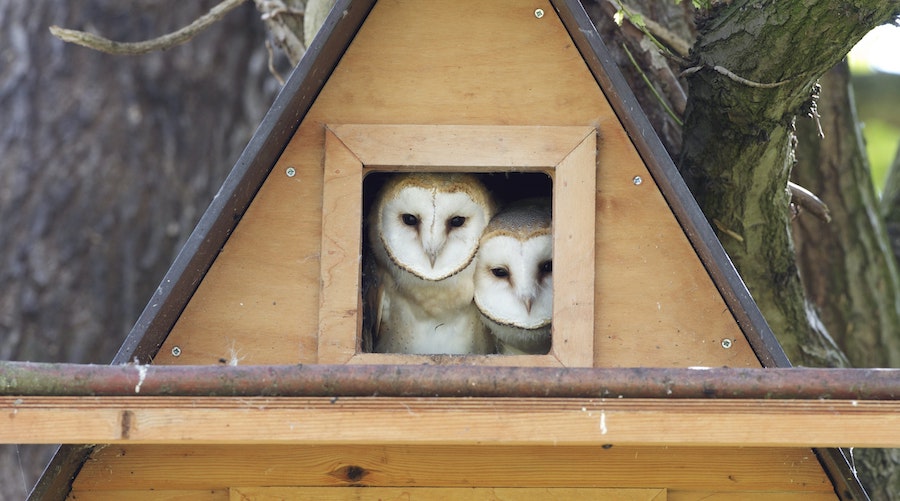How safe is your nest box? Make a bird’s home a happy one
If you are planning to put up a nest box during National Nest Box Week and beyond, the British Trust for Ornithology and the RSPB are warning that, while some boxes provide a perfect breeding cavity for birds, others are far from ideal.
You may be tempted to buy eye-catching brightly coloured nest boxes and quirky types shaped like caravans, farmhouses, eggs and windmills, but the RSPB warns that attractive and elaborate bird boxes aren’t necessarily safe or effective for nesting birds.
So, what should we be going for? The BTO offers the following guidelines:
1. Make sure it’s insulated

A great tit shelters in an insulated nest box
Only choose a box made from an insulating material such as wood or a special waterproof wood/concrete compound like Woodcrete, used for the National Nest Box Week ‘official’ box.
2. Avoid metal and ceramics

Avoid metal nest boxes
Don’t choose a box made from dense materials like metal or ceramics as the interior can become too hot or too cold for chicks to survive. Nest boxes with metal roofs retain too much heat and can have fatal effects for baby birds on warm, sunny days. Metal and plastic nest boxes also suffer from condensation causing baby birds to get damp and cold.
3. Choose a type with thick walls

Choose thick walls for insulation
To provide insulation and be durable, the walls of wooden boxes should be at least 15mm thick. Wooden boxes can be safely treated on the outside with a preservative provided it is non-toxic and water-based. A box made from cedar, oak or beech will far outlive one made from softwood such as pine.
4. Check the hole size

Make sure the holes are the right size
Choose a box with a 32mm entrance hole as this is the ideal size for all small hole-nesting birds such as sparrows and tits. Choose a smaller 26mm hole only if you want to restrict the box to blue tits.
The box should not be too small inside as birds may lay fewer eggs in smaller boxes. The internal floor area should at least 130 square cm (20 square inches).
6. Avoid perches
Perches are not necessary and may even act as a foothold for squirrels or weasels as they reach into the box to grab eggs and chicks.
7. Maintain easy access

Allow easy access for cleaning
A good box should provide easy access for human observers who wish to record the contents and to clean out the disused nesting material at the end of the season.
8. Place them strategically

Site the box with plenty of shelter.
The ideal height for a small-hole type nest box is between 1m and 5m above the ground with a clear flight path. Care must be given to make sure the box isn’t easily accessible to predators.
Unless there are trees or buildings which shade the box during the day, face the box between north and east, thus avoiding strong sunlight and the wettest winds.
There are different kinds of nest boxes for different species of bird. Cavity nesting birds like nest boxes with entrance holes, and the size of hole will depend on the target species.
For example, blue tits prefer boxes with a small hole (25mm), Starlings on the other hand would need slightly larger holes (45mm). Other birds like open-fronted nest boxes, such as robin and spotted flycatchers.
9. Avoid…

Avoid brightly coloured nest boxes
Steer clear of brightly coloured nest boxes. The more inconspicuous they are, the better. Make sure they are not made from flimsy materials as many boxes fall apart when any weight is put inside.
Don’t let them be too shallow as young birds could leave prematurely by falling out, and don’t let them be too deep as young birds may have problems getting out when they are ready to leave.
The Press Association
Latest posts by The Press Association (see all)
- 5 surprising things you can clean in the washing machine - January 9, 2025
- Prince William posted a heartfelt birthday message to ‘most incredible wife and mother’ - January 9, 2025
- Birthday wishes for Catherine from royal family as the Princess of Wales turns 43 - January 9, 2025
- Maple Cinnamon Granola - January 8, 2025
- 8 things your feet can tell you about your health - January 8, 2025





















